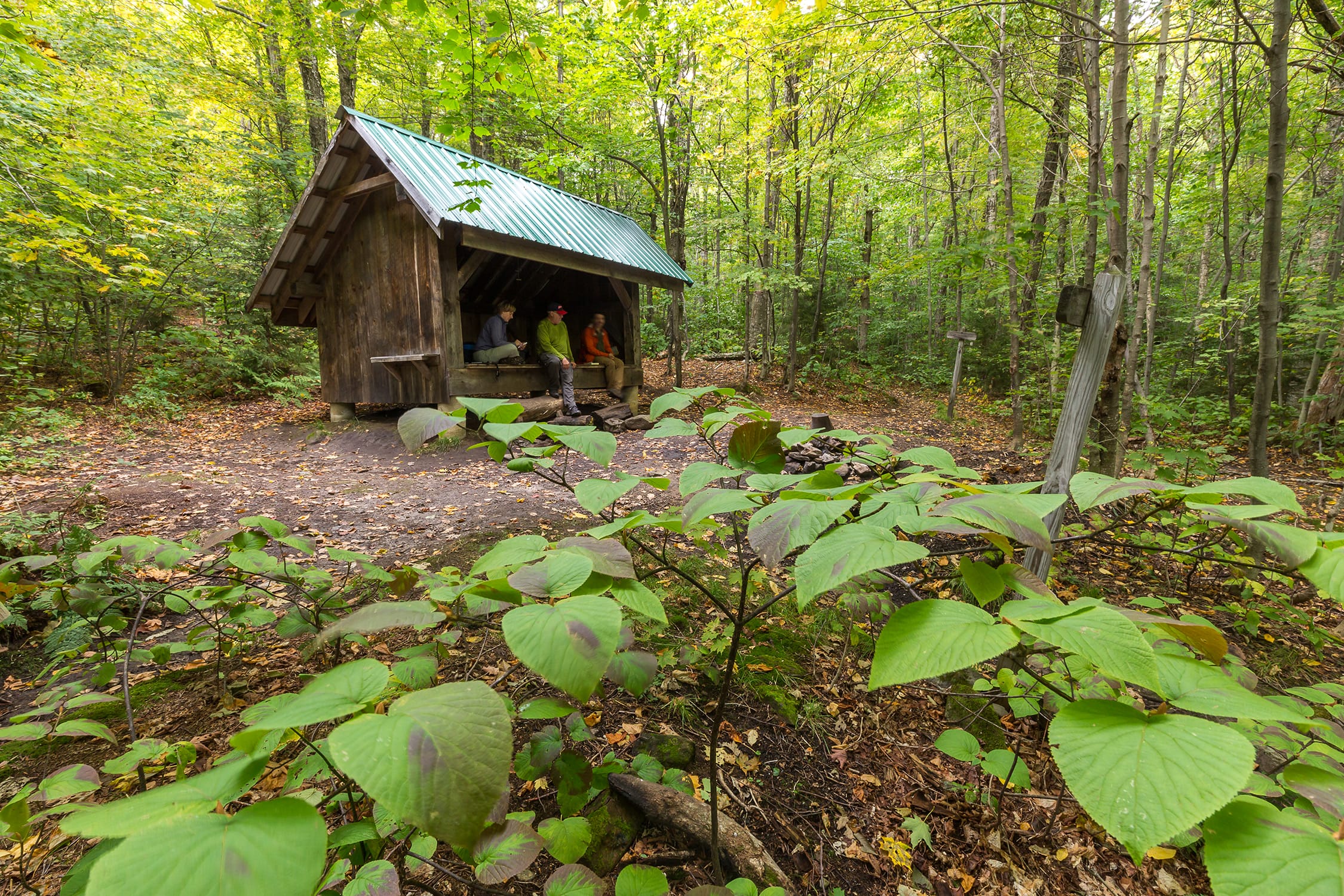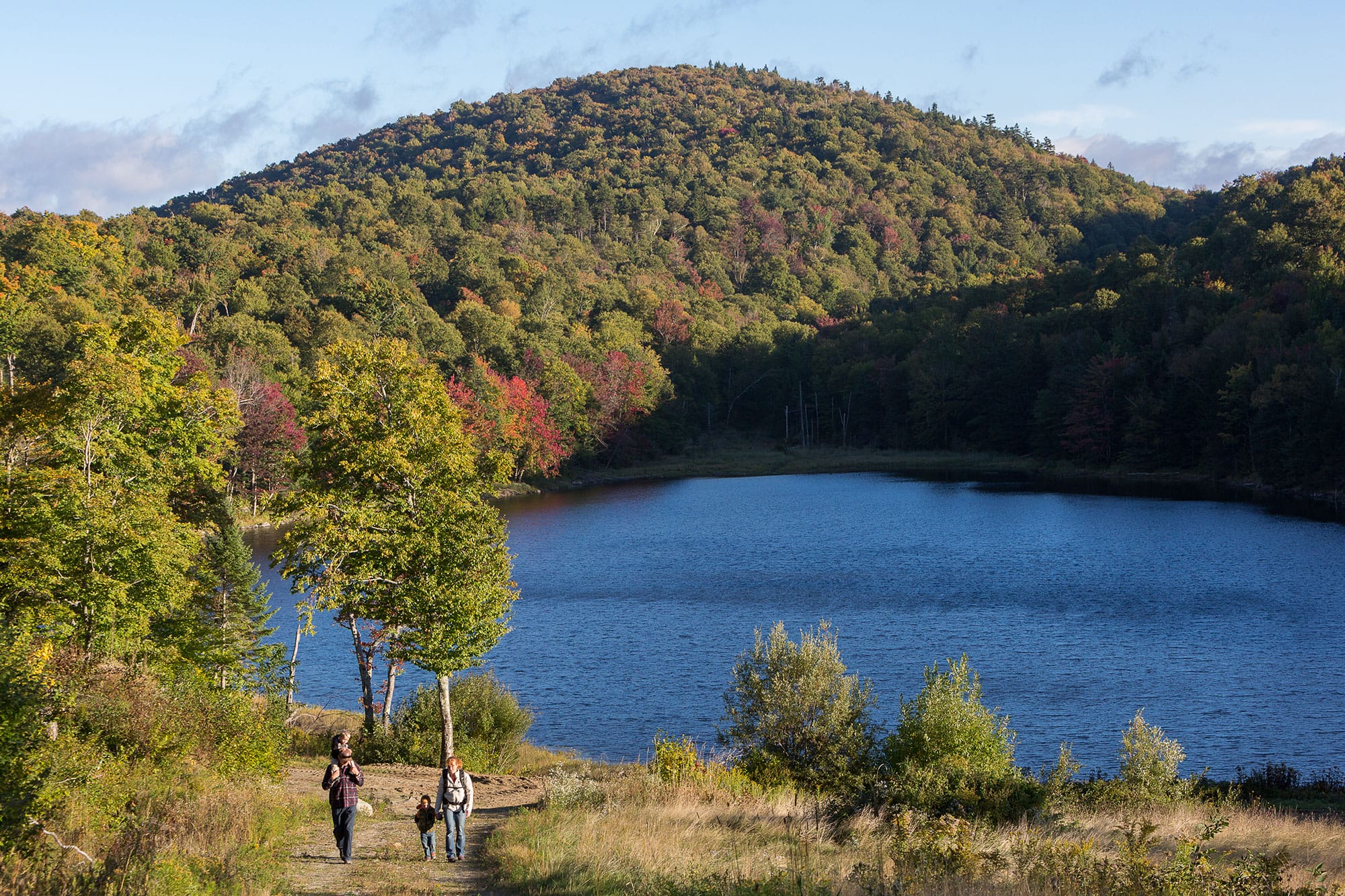With 2,800 acres of dense forests, headwater streams, and scenic views, Rolston Rest is a jewel in the rugged landscape of Vermont. It teems with moose and bear and is home to the endangered northern long-eared bat. It is a favorite destination of hikers, hunters, cross-country skiers, and others who come for exercise, as well as a dose of awe amid stands of signature sugar maple and seven mountain peaks.
For decades, the property remained in private hands, representing the largest inholding in the Green Mountain National Forest. And while a timber company had historically allowed public access, that portion was recently reduced to a 200-foot strip surrounding the Long Trail. This spring, Trust for Public Land transferred Rolston Rest to the U.S. Forest Service, ensuring it will remain forever accessible as part of the national forest.
“Rolston Rest is an integral part of Vermont’s beloved Green Mountains, with significant wildlife habitat, nationally recognized trails—and tremendous outdoor recreation opportunities,” says Shelby Semmes, vice president of the New England region for Trust for Public Land. “Its protection has been a top priority for five decades.”

Hikers of the Long Trail take a break at the Rolston Rest shelter. Photo: Kurt Budliger
In addition to being the biggest remaining prize within the national forest’s borders, Rolston Rest, which is named after a lean-to on the Long Trail, is a convergence point for Vermont’s major trails. The property hosts 3 miles of the Long Trail, which runs 273 miles north to south; two miles of the Catamount Trail, which is popular among cross-country skiers; and the new, multiuse Velomont Trail, which will one day connect mountain bike networks across the state.
Additionally, the property is visible from the nearby Appalachian National Scenic Trail, which in recent years has seen more of its viewshed fragmented by development associated with nearby ski resorts. Preserving Rolston Rest’s wild character—a tableau of forests, ponds, and summits—keeps perspectives from that iconic trail intact.
Help us enhance access to nature by sending a letter to Congress in support of creating and connecting trails across the country.
For years, Kate Wanner, TPL’s senior project manager in Vermont, kept her sights trained on Rolston Rest while juggling other projects. To date, Trust for Public Land has protected more than 46,500 acres in the Green Mountains, with the goal of conserving an additional 20,000 acres in the next decade. The idea, Wanner says, is to protect strategic forest that improves climate resilience and quality of life for Vermonters. Such parcels not only preserve public access, but they also support carbon sequestration, wildlife habitat, water resources, and Vermont’s tourism- and forest-based economy.
In the past year alone, conservation projects in the Green Mountains included Lincoln Peak, with 619 acres that expanded the national forest and protects the Catamount Trail, and Judevine Headwaters, whose 13 acres permanently protect one of the last unprotected sections of the Long Trail. Previously, that section was publicly accessible only through an informal agreement with the owner.
Rolston Rest had risen to the top of Wanner’s priority list both for its size and proximity to trail networks. With nearly 3,000 acres, the property represents a conservation victory of a whole different order. “We want to protect the wilderness experience of the Long Trail, and this achieves that in a very tangible way,” Wanner explained. “That’s a goal of our Green Mountain program.”
One vision for the property involves rebuilding a hut that recently burned down. The new hut would serve as a year-round cabin, operated by the Vermont Huts Association as part of its four-season, hut-to-hut network.
Rising temperatures, bigger storms, and asphalt schoolyards pose significant risks during recess. Urge Congress to prioritize schoolyards that cool neighborhoods, manage stormwater, and provide opportunities for kids to connect with nature today!

To dedicated hikers and nature lovers, the Rolston Rest acquisition is critical, in particular, for users of the Long Trail. It is the nation’s oldest long-distance hiking trail and a National Recreation Trail, a special designation bestowed by the National Park Service. Where it traverses Rolston Rest, the trail had only a narrow buffer of protected land on either side (the aforementioned 200-foot strip). That meant hikers sometimes heard the growl of nearby chainsaws and other machinery.
Mike DeBonis, executive director of the Green Mountain Club, which worked with TPL on the project, says protecting Rolston Rest will restore a sense of being immersed in nature.
“Trust for Public Land has the horsepower—the staff and expertise–to handle these larger real estate transactions.”
– Mike DeBonis, Executive Director, Green Mountain Club
“It was an actively managed property, and they were doing a lot of timber cutting,” says DeBonis of the site’s recent history. “There was cutting on either side of the trail, so you definitely noticed it. That’s not necessarily a bad thing—to have a working landscape. But as a hiker, you want to go through the woods and have a wilderness experience.”
Any future logging will be handled more judiciously: the national forest will manage land around the Long Trail with a focus on high-quality recreation experiences and habitat protection, with a prohibition on any commercial timber management within 1,000 feet of the trail.
DeBonis praised Trust for Public Land for persevering against a backdrop of competing interests and multiple constituents. In addition to the Green Mountain Club, parties that had a role in Rolston Rest’s protection include Green Mountain National Forest; the State of Vermont; the Towns of Chittenden, Mendon, and Killington; the Catamount Trail Alliance; and several community partners.
“Trust for Public Land has the horsepower—the staff and expertise–to handle these larger real estate transactions and to look at bundling and maximizing the conservation benefit of a property like Rolston Rest,” he says. “That’s important not only for us, but for other organizations in the state that partner with TPL on these projects.”
Lisa W. Foderaro is a senior writer and researcher for Trust for Public Land. Previously, she was a reporter for the New York Times, where she covered parks and the environment.

Donate to become a member, and you’ll receive a subscription to Land&People magazine, our biannual publication featuring exclusive, inspiring stories about our work connecting everyone to the outdoors.

